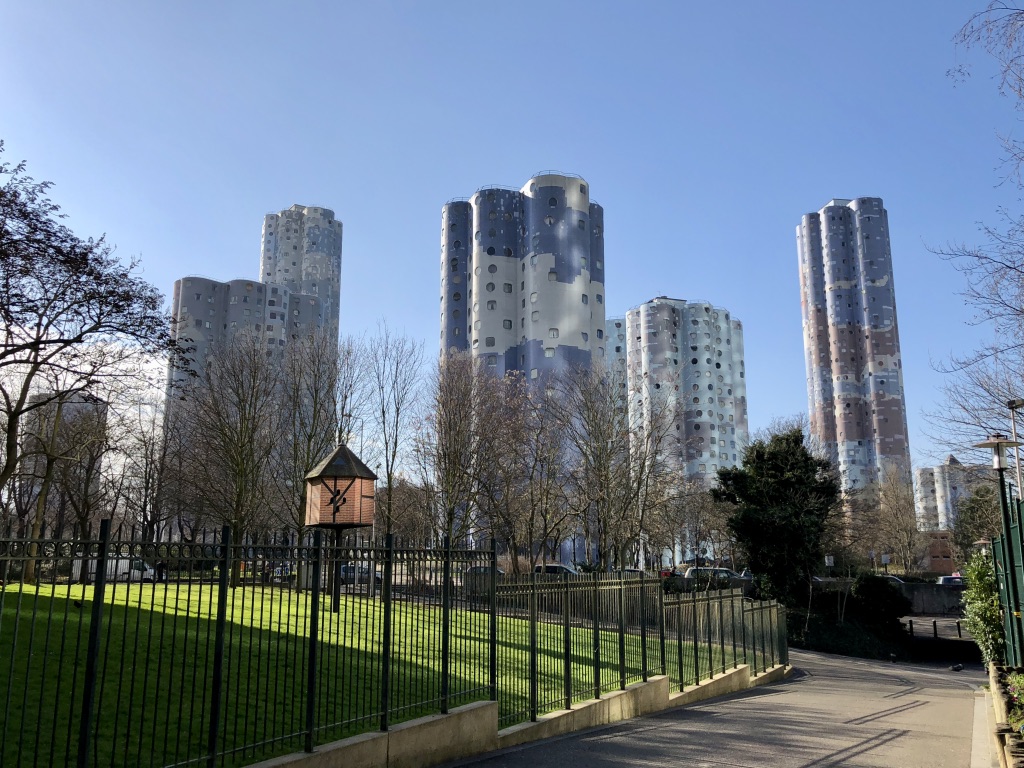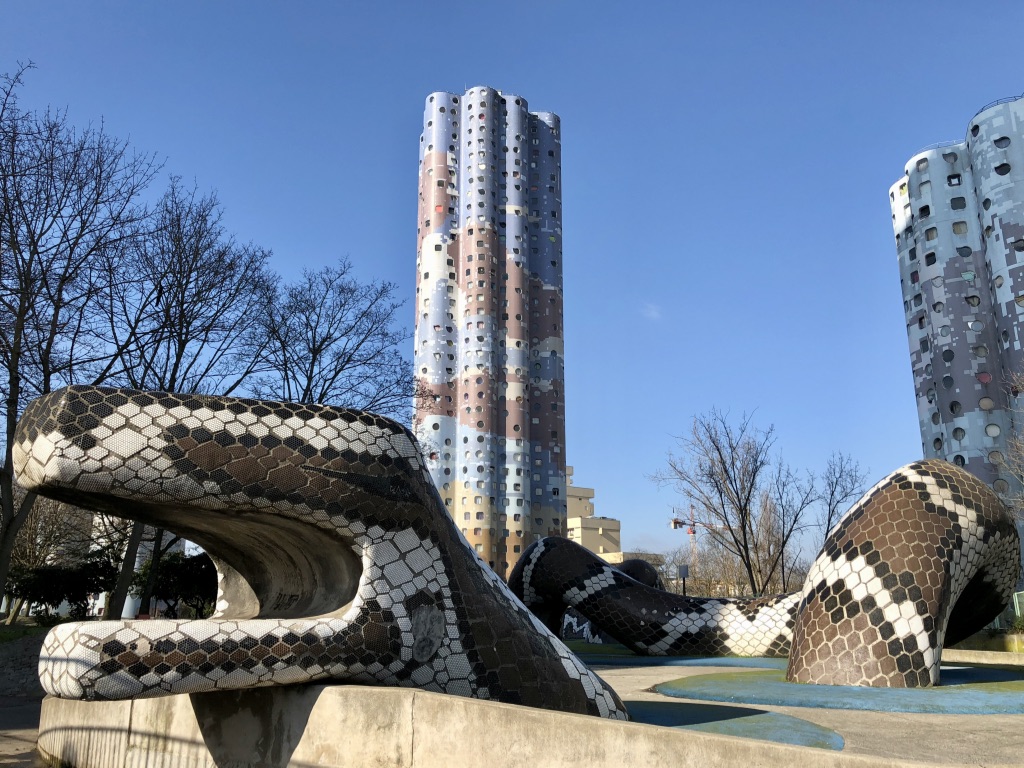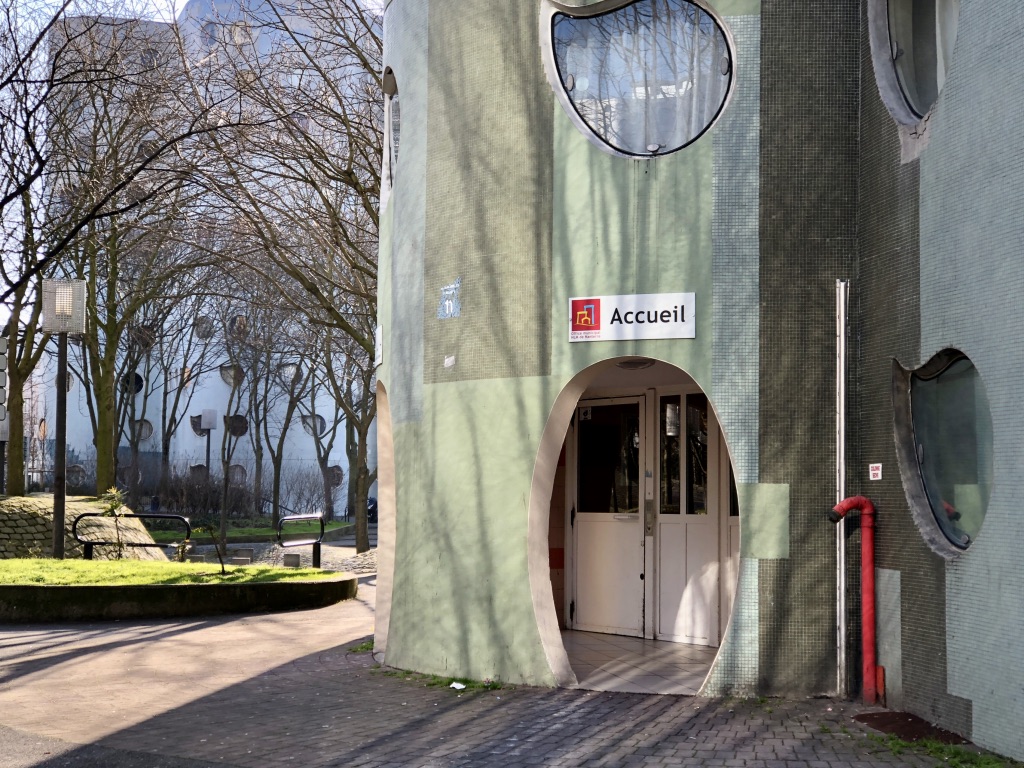The Tours Aillaud – Change in Prospect
AT THE WESTERN EXTREMITY of Paris lies the 560-hectare purpose built Paris business district of La Défense, home to an array of CAC40 company headquarters most of which are housed in ultra-modern glass and steel towers.
Just a ten-minute walk from La Défense, in the suburb of Nanterre, lies another set of towers, the Tours Aillaud. Unlike their neighbours in La Défense, these towers are not a glitzy home to multi-national corporations but rather they are one of the many social housing projects created as a response to an increasing housing shortage in Paris after World War II.

An aerial view of the Tours Aillaud via Google Earth
Conceived during the post-war economic boom, these social housing projects, or Grands Ensembles as they were known, were intended to be the embodiment of modernity and innovation. With each comprising several hundred to several thousand homes they were meant to increase living standards for the modern family away from the bustle of the city.

Built between 1972 and 1981 and named after their chief architect, Emile Aillaud, the Tours Aillaud comprise 18 towers housing 1,607 apartments. The towers are of varying heights with the smallest comprising 13 floors and the tallest 39 floors reaching a height of 344 feet.
Belying the notion that suburban social housing could only offer residents shoe-box style apartments, the Tours Aillaud resist straight lines and regularities with a series of connected cylinders, woven together by a labyrinth of passages, alleys, terraces and an undulating paved landscape.

The cladding of each building is made of frescos in ‘pate de verre’ (paste glass) representing clouds in the sky. The French word for ‘clouds’ is ‘nuages’ so the Tours Aillaud are often referred to as the Tours Nuages.
The Tours Aillaud is somewhat of a family affair. Not only was Emile Aillaud the chief architect of the development but his daughter, Laurence Rieti, designed the large snake sculpture that forms part of the playground area near the highest towers and his son-in-law, Fabio Rieti, designed the pate de verre frescos on each building.

As well a designing the towers, Emile Aillaud also incorporated into the surrounding area one tree for each apartment, so over 1,600 trees.

Sounds around the Tours Aillaud:

Sadly, for the most part the post war Grands Ensembles didn’t live up to their utopian ideals as poverty and crime crept in and by the mid 1970s no more were being commissioned. Now, many have been demolished and more are due to be torn down as they age.
While the Tours Aillaud have survived, a confluence of events means that the prospect of change is looming.
It currently costs between €500,000 and €800,000 per year to maintain the buildings. Water seepage through the concrete walls and through the uniquely shaped windows is a persistent cost as is the maintenance of the pate de verre frescos. As the buildings age the maintenance costs increase.
The soaring maintenance costs are one threat to the Tours Aillaud, but another threat comes from the ultra-modern glass and steel corporate headquarters in neighbouring La Défense. The successful La Défense business district needs to expand and to do that it needs to engulf more of the neighbouring suburbs – Courbevoie, Puteaux and Nanterre. The Tours Aillaud in Nanterre are a prime target for this expansion.

Faced with the escalating maintenance costs on the one hand and the La Défense opportunity as they would no doubt see it on the other, the Nanterre local authority and the Département of Hauts-de-Seine have hatched a restructuring plan for the Tours Aillaud.
Although the plan hasn’t yet been finalised, several teams of architects and urban planners are working on the options for the site and they are in consultation with the residents. It seems clear though that the finished plan will include the demolition of some of the existing towers and the relocation of between one third and half the 4,500 people who live there. Some of the remaining towers would be converted to offices, co-working spaces and a hotel while the towers left as social housing would be refurbished and the outside walls reclad with more cost effective materials.
The consultation period runs until October this year and the work is due to begin some time in 2020.

What will become of the Tours Aillaud remains to be seen. Consultation periods in France have a habit of overrunning their original deadline by some distance and projects regularly get mired in beaureaucratic red tape. But no doubt change will come at some point. In addition to seeing how the visual landscape of the Tours Aillaud changes I shall be particularly interested in monitoring how the soundscape changes.








